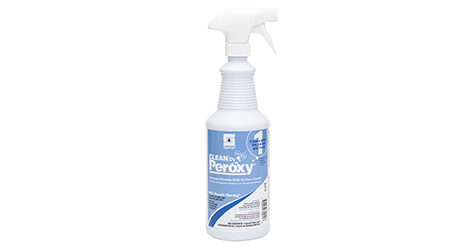Just like any other floor surface, carpet takes a beating from foot traffic.
And, if a facility has extended hours of operation and a high occupation density, the carpet can receive quite a bit of abuse.
However, building occupants do not walk on all parts of a carpet; they track soils indoors in specific patterns that quickly develop into traffic lanes.
Facilities that take a proactive approach and clean their carpets on a consistent and regimented basis rarely need to worry about traffic lane soiling.
But, locations with lower operating budgets, insufficient staffing relative to foot traffic or those not making use of floor matting tend to view traffic lane soiling as problematic.
If you remove dry particulate soils from carpets frequently and thoroughly, less intensive cleaning will be necessary.
Especially in entrances and hallways, foot traffic is intensified and fibers become prematurely worm, matted down and rapidly soiled.
If not cleaned properly and frequently, traffic lanes can be a real eyesore to an otherwise clean carpet.
So, the question is: “How can traffic lane soiling be remedied or even prevented in the first place?”
The answer is not universal to all facilities and can change with the seasons.
The first of the four aspects is to analyze the amount of foot traffic in your facility and devise a custom-tailored plan.
Step One: Analyze
Do you have multiple entrances to your facility?
If so, it might be helpful to benchmark the number of people using each entrance or exit to gauge the necessary effort to keep each respective corridor clean.
Another thing to be mindful of is the type and color of your carpet.
Though most commercial carpets are of the loop pile olefin variety, some are not — and the type of fibers present and their pigments can either mask soils or exacerbate traffic lane patterns.
The last part of the initial analysis is to decipher whether or not protective coatings — which help resist soiling and make cleaning easier — have been applied to the carpet either from the mill or after installation.
Step Two: Prevent
Now that you are keen to the amount of traffic in your facility and the makeup of your carpet, it is important to prevent as much soiling as possible.
The best way to prevent soiling and the resulting visible traffic lanes is with an effective matting system.
Any matting system should consist of three parts to maximize its effectiveness.
- Scraper mat
The scraper matting is placed outside the facility.
Typically made from polypropylene fiber, these mats are designed to aggressively remove the larger particulates of soil and moisture that can damage floors and carpets the most.
- Scraper/wiper mat
Directly inside the building, in the vestibule area mentioned earlier, should be a less aggressive matting material, sometimes referred to as a scraper/wiper mat.
This mat further removes soil and traps moisture.
It is also designed to take advantage of the way people actually walk into a facility.
Typically, when walking through the vestibule, people twist their feet when they open the next set of doors.
This twisting motion helps remove soil and moisture, which is then captured and trapped in the mat.
- Wiper mat
The final matting component, found directly inside the facility, is often referred to as a wiper mat.
Not as roughly textured as the other two matting components, some cleaning professionals refer to it as “the final line of defense,” stopping most of the remaining contaminants and moisture from entering the facility.
Step Three: Deep Clean
Although utilizing a matting system can effectively prevent a great deal of soil from depositing in your carpet, dirt and debris will still find a way into the fibers.
So, the third step is to periodically deep clean your carpets, giving extra attention to traffic lanes.
Utilization of a prespray in heavily soiled areas will make for easier, more effective cleaning with less effort.
Another consideration to take when deep cleaning traffic lanes is that hotter water will remove more dirt.
But, it is always wise to check with the carpet manufacturer to see just how much heat a carpet can handle or what types of cleaning chemicals it can withstand before becoming damaged.
Remember, the idea is to clean the carpet and remove the visible traffic lanes, not damage it.
While the encapsulation method can be used on a periodic basis, it is generally not advised to rely on encapsulation alone to clean soiled traffic lanes.
The technology is developing and efficacy is increasing, but most carpet care technicians still prefer the power of hot water extraction for its ability to flush soils from carpet fibers.
Step Four: Repeat
After your first cycle of deep cleaning — the frequency will vary depending on your amount of foot traffic, the length of your matting system and your location — go back and reassess the results.
Did your foot traffic patterns change, necessitating additional matting to be placed elsewhere?
Is it a season with inclimate weather warranting more frequent cleaning?
Or, maybe everything worked out perfectly and you have developed a regimented carpet cleaning program to sufficiently address the issue of traffic lane soiling.
Only you can tell if your efforts are making the grade.
By making use of the four aspects — analyze, prevent, deep clean and repeat — you can custom-tailor a program that will keep your carpets clean and fresh with no visible traffic lanes.


